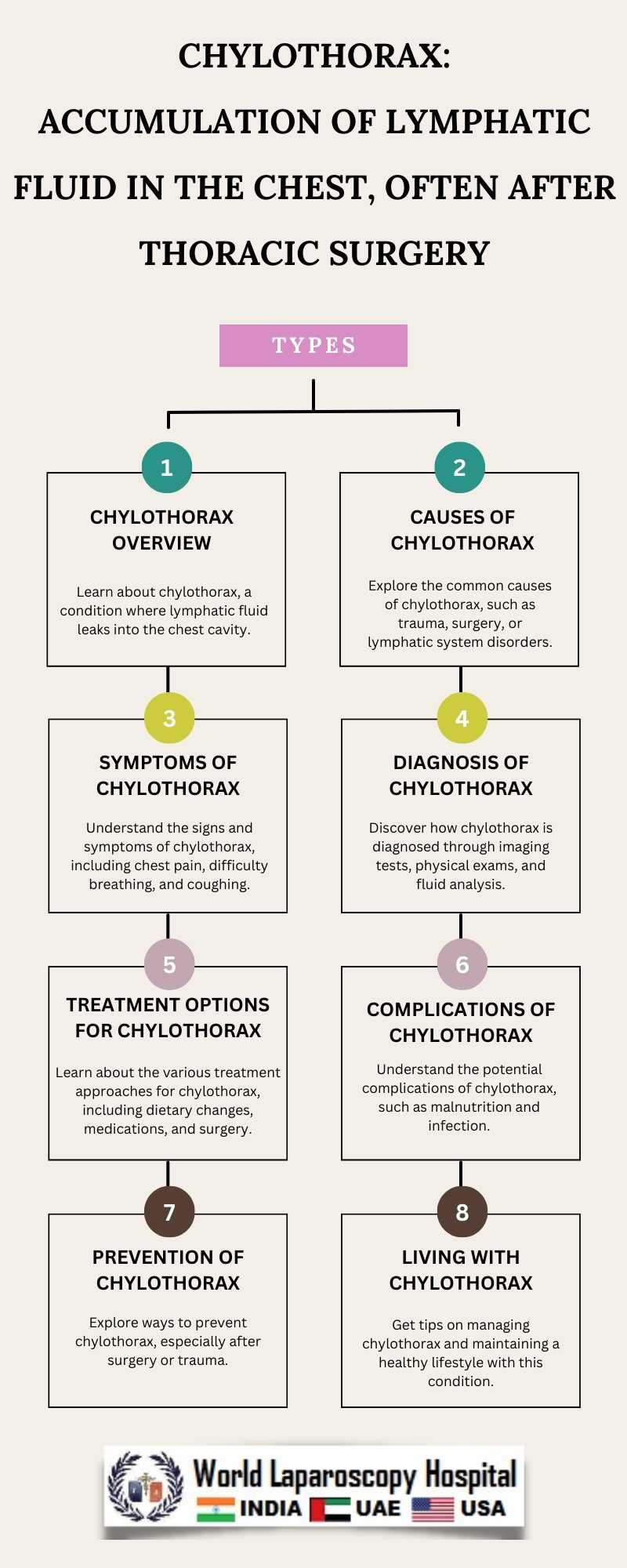
The thoracic duct is the main channel through which lymphatic fluid from the lower and left side of the body drains into the bloodstream. Injury to this duct during surgery, such as cardiac or esophageal surgery, can result in chyle leakage. Other causes of chylothorax include trauma, malignancy, and certain medical conditions like tuberculosis or lymphoma.
Chylothorax presents with symptoms such as shortness of breath, chest pain, cough, and respiratory distress. Diagnosis is confirmed by analyzing the pleural fluid, which appears milky in chylothorax due to the presence of chyle. Imaging studies like chest X-ray or CT scan may also be used to visualize the accumulation of fluid in the chest cavity.
Management of chylothorax depends on the underlying cause and the severity of symptoms. Conservative measures, such as dietary modifications (low-fat diet) and drainage of the pleural fluid using a chest tube, are often the first line of treatment. In cases where conservative management fails, surgical interventions like thoracic duct ligation or embolization may be necessary to stop the chyle leak.
Complications of chylothorax can include nutritional deficiencies, immunodeficiency, and respiratory compromise. Therefore, close monitoring and appropriate management are essential to prevent complications and promote recovery.
Conclusion:
Chylothorax is a rare but potentially serious complication of thoracic surgery characterized by the accumulation of chyle in the pleural space. Early recognition, diagnosis, and appropriate management are crucial in improving outcomes for patients with this condition.